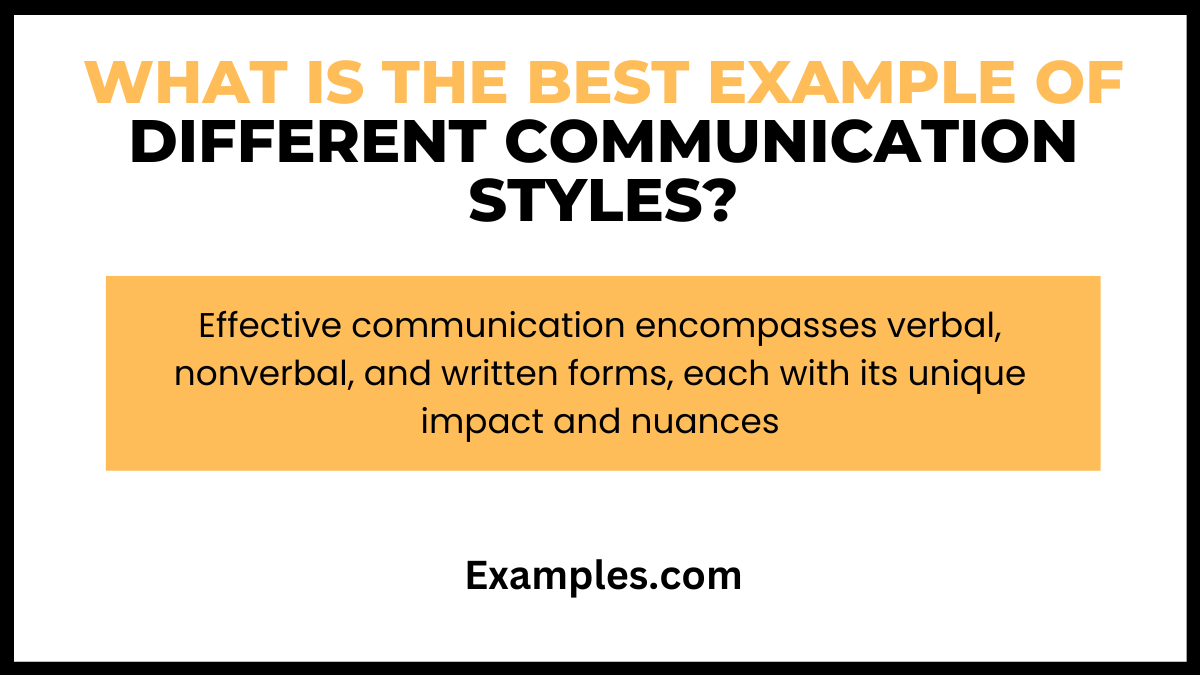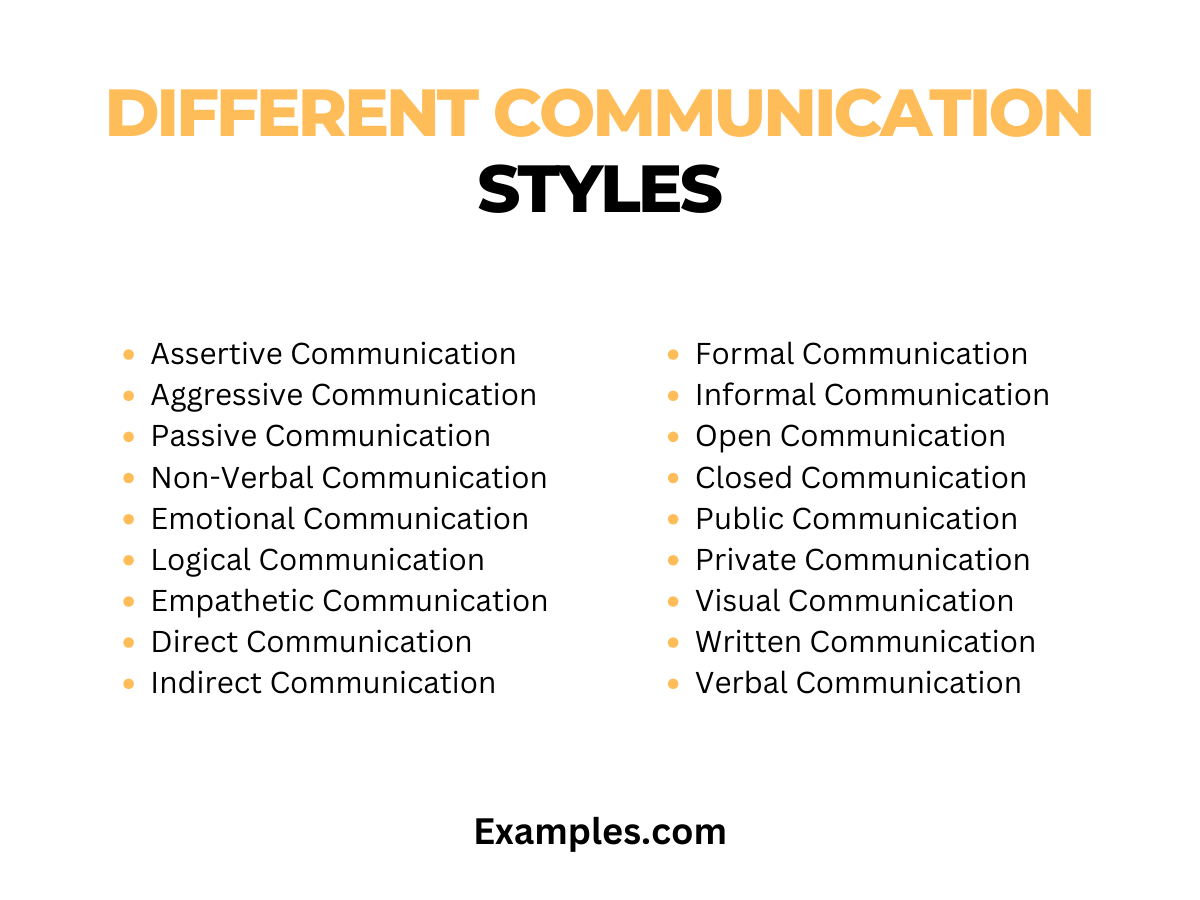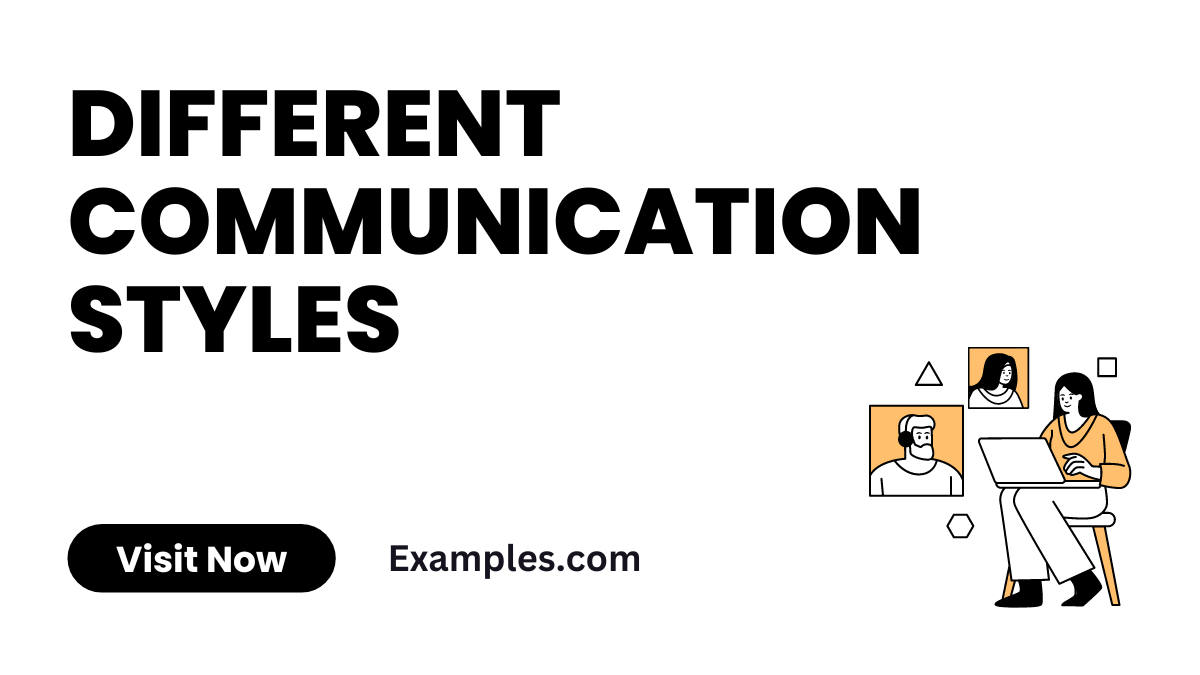19+ Different Communication Styles Examples
Understanding the nuances of different communication styles is crucial in today’s interconnected world. This comprehensive guide delves into various communication methods, offering insights and practical tips to enhance your interpersonal skills. By embracing these diverse styles, you can effectively navigate through personal and professional interactions, fostering better understanding and stronger relationships. Discover the key to unlocking effective communication and elevate your conversational prowess with our in-depth exploration.
What is the Best Example of Different Communication Styles?

Different communication styles can be best exemplified in a professional setting where a mix of assertive, passive, aggressive, and passive-aggressive communications are observed. Understanding these styles helps in identifying and adapting to various interpersonal dynamics, leading to more effective and harmonious interactions.
20 Different Communication Styles

Understanding various communication styles is crucial for effective interaction in diverse settings. This article explores 20 distinct styles, each with its unique characteristics and examples.
- Assertive Communication: Direct and respectful, fostering open dialogue.
Example: “I understand your point, but here’s my perspective.” - Aggressive Communication: Forceful and often disrespectful, may intimidate others.
Example: “You’re wrong, and here’s why!” - Passive Communication: Avoiding direct expression, often leading to misunderstanding.
Example: “Whatever you think is best.” - Passive-Aggressive Communication: Indirectly expressing negative feelings.
Example: “Fine, go ahead without me.” - Non-Verbal Communication: Conveying messages through body language, facial expressions, and gestures.
Example: Nodding to show agreement. - Emotional Communication: Expressing feelings openly and honestly.
Example: “I feel frustrated when this happens.” - Logical Communication: Focusing on facts and logic, often used in professional settings.
Example: “Based on the data, we should…” - Empathetic Communication: Showing understanding and empathy towards others.
Example: “I can see why you feel that way.” - Direct Communication: Straightforward, leaving little room for misinterpretation.
Example: “I need this done by tomorrow.” - Indirect Communication: Suggesting rather than stating directly.
Example: “It might be good to review this again.” - Formal Communication: Professional and structured, often used in corporate settings.
Example: “As per our discussion…” - Informal Communication: Casual and relaxed, common among friends.
Example: “Hey, what’s up with the project?” - Open Communication: Encouraging a free flow of information and ideas.
Example: “Let’s brainstorm together on this.” - Closed Communication: Limited sharing of information, often authoritative.
Example: “The decision has been made.” - Public Communication: Addressing a group or audience, like public speaking.
Example: “Today, I want to talk about…” - Private Communication: Personal and confidential, often one-on-one.
Example: “I want to discuss your performance privately.” - Visual Communication: Using images, graphics, and visuals to convey messages.
Example: Presenting a chart to explain trends. - Written Communication: Conveying messages through writing, like emails or reports.
Example: “As detailed in my email…” - Verbal Communication: Using spoken words to express ideas.
Example: “Let me explain my point of view.” - Reflective Communication: Listening actively and reflecting back what is heard.
Example: “So, what you’re saying is…”
These diverse communication styles play a pivotal role in interpersonal interactions, influencing both personal and professional relationships. Recognizing and adapting to different styles can greatly enhance communication effectiveness.
Different Communication Styles in Relationships
- Open Communication: Involves sharing thoughts and feelings openly and honestly.
- Non-Verbal Communication: Utilizes body language, facial expressions, and tone to convey messages.
- Listening: Active listening is crucial for understanding and empathizing in a relationship.
- Conflict Resolution: Involves using communication to resolve disagreements healthily.
- Expressive Communication: Sharing personal experiences, emotions, and perspectives.
- Boundary Setting: Clearly communicating personal limits and respecting others’ boundaries.
- Supportive Communication: Offering encouragement, understanding, and support.
- Constructive Criticism: Providing feedback in a way that is helpful and not harmful.
Different Communication Styles in the Workplace
- Directive Communication: Clear, concise, and to-the-point, often used in leadership roles.
- Inclusive Communication: Encouraging input and participation from all team members.
- Feedback-Oriented: Regularly giving and receiving constructive feedback.
- Digital Communication: Utilizing emails, messaging apps, and social media effectively.
- Formal Communication: More structured and follows established protocols.
- Informal Communication: Casual and less structured, often used for team bonding.
- Persuasive Communication: Convincing others to understand a point of view or take action.
- Cross-Cultural Communication: Being aware of and respectful towards different cultural communication norms.
Different communication styles is essential for effective interpersonal interactions. By adopting assertive and empathetic approaches, individuals can foster open dialogue and build meaningful connections. Remember to be direct when needed, use appropriate formality, and leverage non-verbal cues. With these insights and tips, you can navigate diverse communication scenarios successfully.



